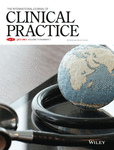The comparison of perioperative outcomes between percutaneous nephrolithotomy and retrograde intrarenal surgery in elderly patients
Abstract
Objectives
In this study, we aimed to compare the outcomes and complication rates of percutaneous nephrolithotomy (PCNL) and retrograde intrarenal surgery (RIRS) in elderly patients.
Materials and Methods
Between April 2011 and January 2020, patients who underwent PCNL and RIRS for renal stone in elderly patients were retrospectively evaluated. The two groups’ perioperative values, stone-free rates and complication rates were compared. Post-operative complications were noted according to the Clavien scoring system.
Results
There were 89 and 72 patients in the PCNL and RIRS group respectively. The median age was 67 years in both the groups (P = .192). The stone size were 22.2 ± 3.5 mm and 19.9 ± 7.1 mm in the PCNL and RIRS group, respectively (P = .082). Stone-free rates were significantly higher in PCNL group (P = .021, P = .034). Also we found that overall complication and major complication rates were significantly higher in PCNL group (P = .016, P = .029).
Conclusion
Despite there was higher stone clearance in PCNL, the complication rates were higher compared with RIRS. So RIRS might be a safe alternative treatment method to PCNL in older patients.
DISCLOSURES
The authors declare no conflict of interest.




